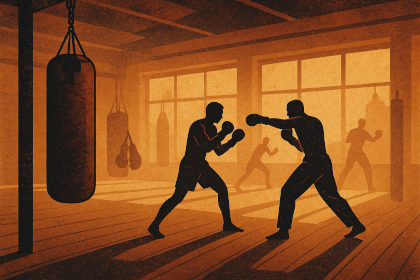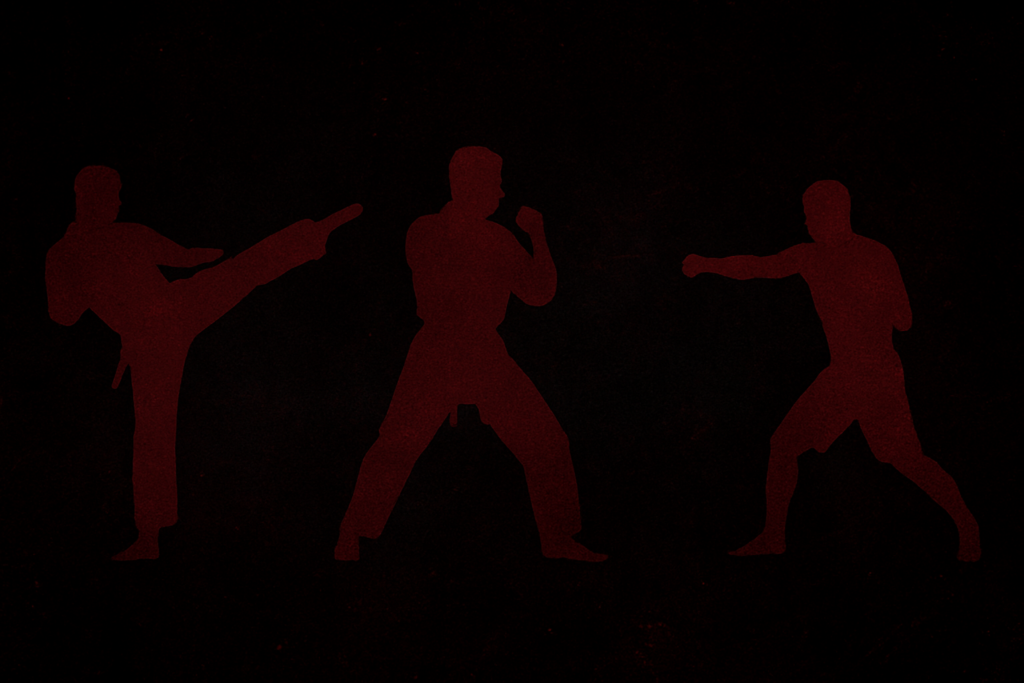The Sweet Science of Skill, Power, and Precision
🧠 A Brief History of Boxing

Boxing, often called “the sweet science,” is one of the world’s oldest and most refined combat sports.
Its origins date back to ancient Egypt and Mesopotamia, over 5,000 years ago. The sport was later formalized in Ancient Greece, becoming an Olympic event as early as 688 BCE.
Modern boxing, as we know it today, began to take shape in 18th-century England, with the introduction of gloves and codified rules — eventually evolving into the Marquess of Queensberry Rules in 1867, which emphasized safety, technique, and sportsmanship.
From bare-knuckle bouts to modern Olympic and professional boxing, the sport has become a global symbol of discipline, endurance, and strategy.
🥋 Main Characteristics of Boxing
- Core Principle: Hit without being hit — control through timing and movement.
- Training Focus: Punching combinations, defensive skills, footwork, and conditioning.
- Philosophy: Efficiency, rhythm, and mental sharpness.
- Objective: Combine physical strength with tactical awareness and emotional control.
Boxing demands not only physical toughness but also precision, patience, and focus — making it as much a mental game as a physical one.
⚔️ The Philosophy of Boxing
Though often seen as a brutal sport, true boxing is about control, discipline, and self-mastery.
Legendary boxer Muhammad Ali described it best:
“The fight is won or lost far away from witnesses — behind the lines, in the gym, and out there on the road, long before I dance under those lights.”
The “sweet science” represents more than punching — it’s about rhythm, balance, and strategy. Every movement counts, every second demands focus.
🧩 Boxing Styles
While every boxer develops a unique rhythm, four traditional styles are often recognized in the sport:
| Style | Description | Famous Examples |
|---|---|---|
| Out-Boxer | Focuses on long-range control, using footwork and jabs to keep distance. | Muhammad Ali, Lennox Lewis |
| Pressure Fighter (Swarmer) | Aggressive, closes distance quickly, overwhelms with volume. | Mike Tyson, Joe Frazier |
| Counterpuncher | Defensive and patient, relies on timing and reading opponents. | Floyd Mayweather Jr., Juan Manuel Márquez |
| Slugger (Power Puncher) | Trades finesse for knockout power; focuses on heavy blows. | George Foreman, Deontay Wilder |
Each style reflects a different balance between power, speed, and precision — proving there’s no single “right” way to fight.
💪 Training Elements in Boxing
Boxing is one of the most complete full-body workouts in all martial arts.
Training combines conditioning, technical drills, and sparring to develop total athleticism.
Typical training includes:
- Shadowboxing – to refine movement and form.
- Heavy Bag Work – for strength and endurance.
- Speed Bag – for rhythm and coordination.
- Footwork Drills – to maintain distance and control.
- Sparring – to apply timing, composure, and defensive skills.
The result: superior reflexes, stamina, and resilience — both mentally and physically.
🧍♂️ Who Can Practice Boxing?
Boxing is accessible to almost everyone and adapts to different fitness goals.
| Group | Benefits |
|---|---|
| Children & Teens | Builds confidence, coordination, and discipline. Teaches respect and controlled movement. |
| Adults | Excellent for cardiovascular fitness, stress relief, and self-defense. |
| Seniors | Non-contact fitness boxing improves balance, mobility, and reaction time. |
Because boxing can be practiced with or without sparring, it suits athletes, fitness enthusiasts, and complete beginners alike.
💥 Benefits of Practicing Boxing
Physical Benefits:
- Builds endurance, coordination, and explosive power.
- Improves cardiovascular health and agility.
- Tones the entire body — especially shoulders, arms, and core.
Mental Benefits:
- Sharpens focus, timing, and awareness.
- Teaches discipline, perseverance, and confidence.
- Provides emotional release and stress management.
Social Benefits:
- Encourages teamwork, respect, and humility.
- Builds mental resilience through challenge and progress.
🥇 Boxing as a Sport
Boxing is divided into amateur (Olympic) and professional disciplines.
Amateur boxing emphasizes points and precision, while professional bouts test endurance, tactics, and willpower.
In both, respect and safety are key. The ultimate victory isn’t just the win — it’s in the mastery of body and mind.
🌟 Why You Should Try Boxing
Boxing teaches strength without arrogance, confidence without aggression, and focus without fear.
It’s one of the few sports that truly builds total athleticism and mental control.
🥊 Boxing doesn’t just build fighters — it builds character.

